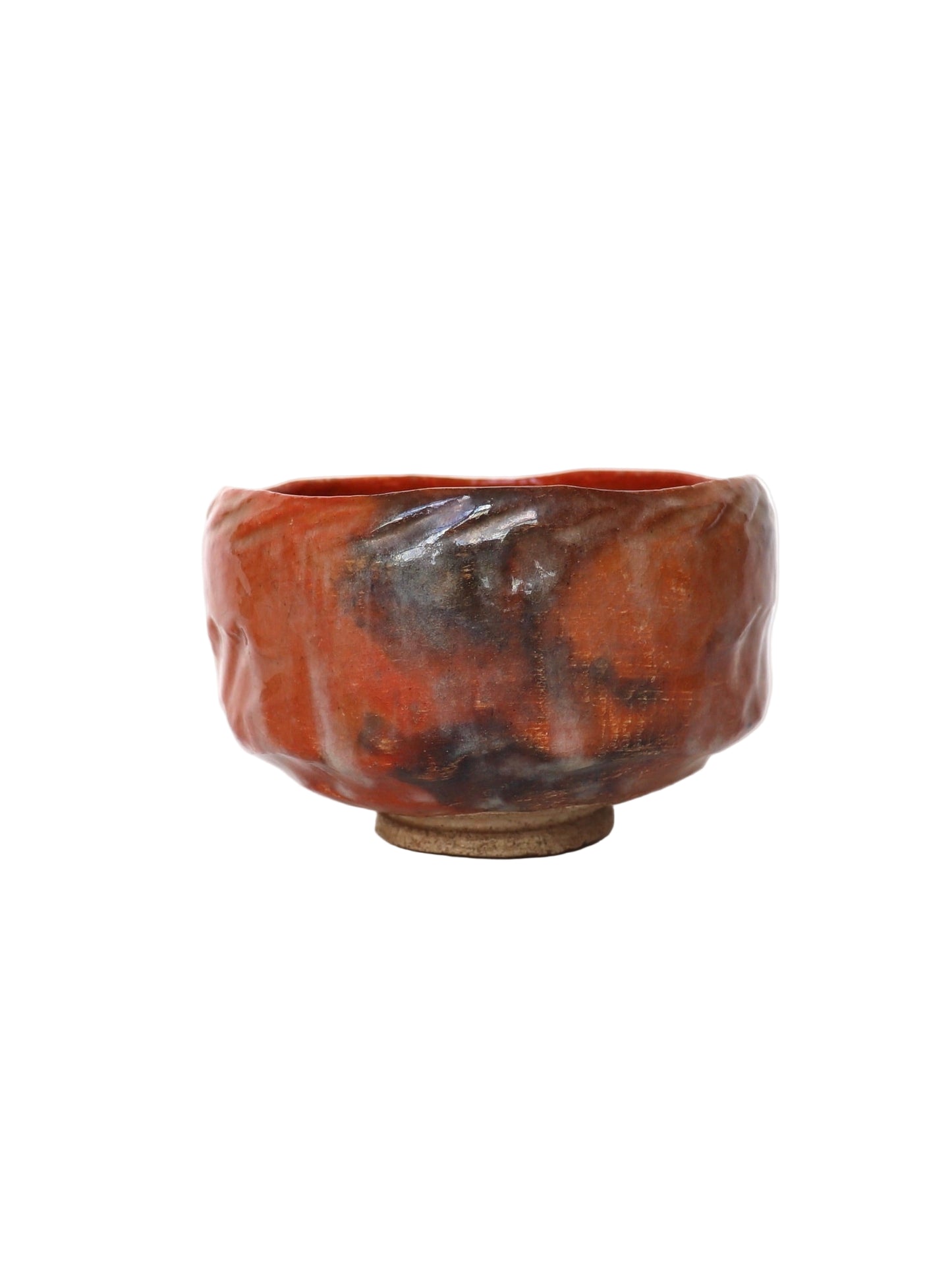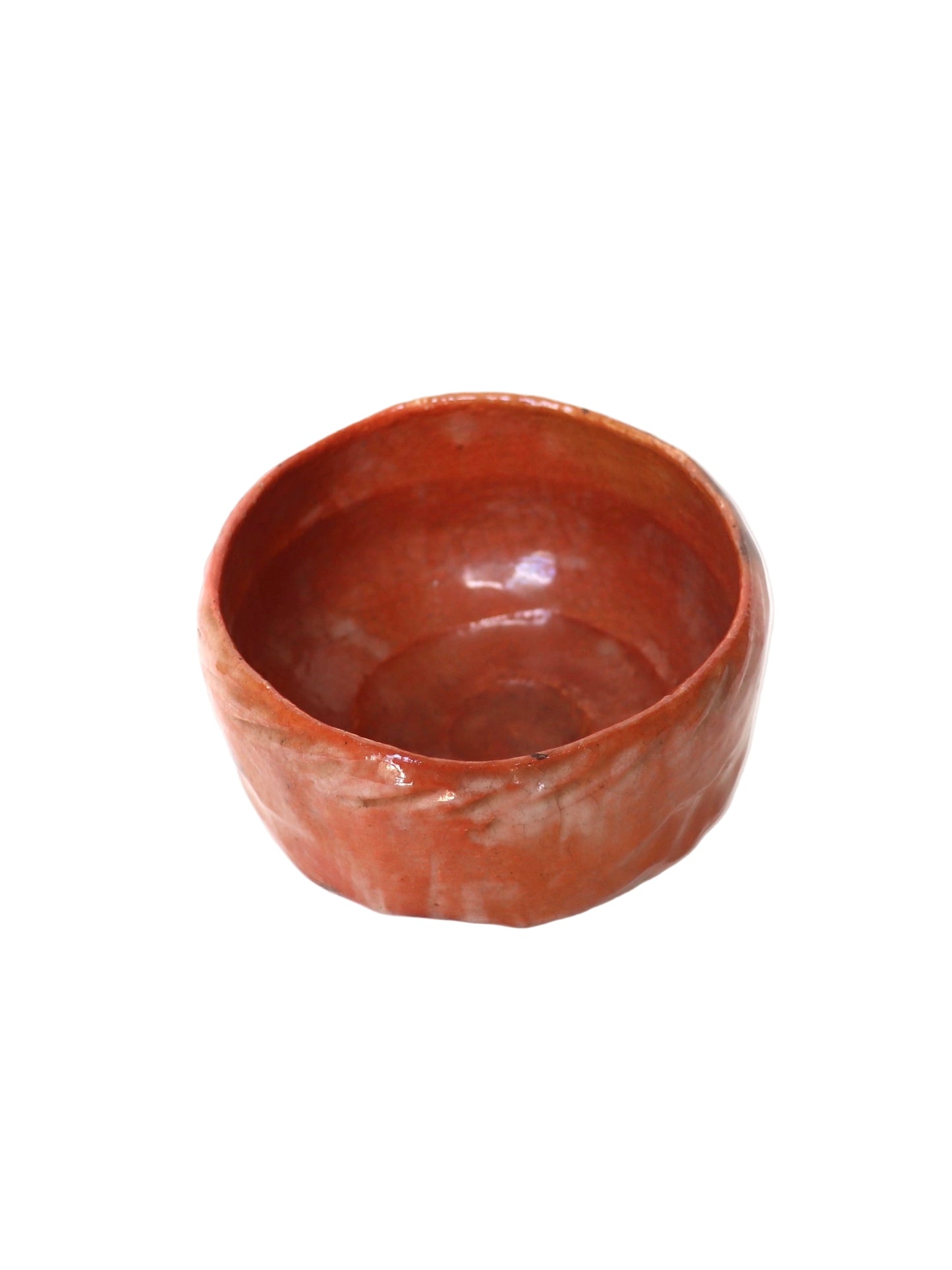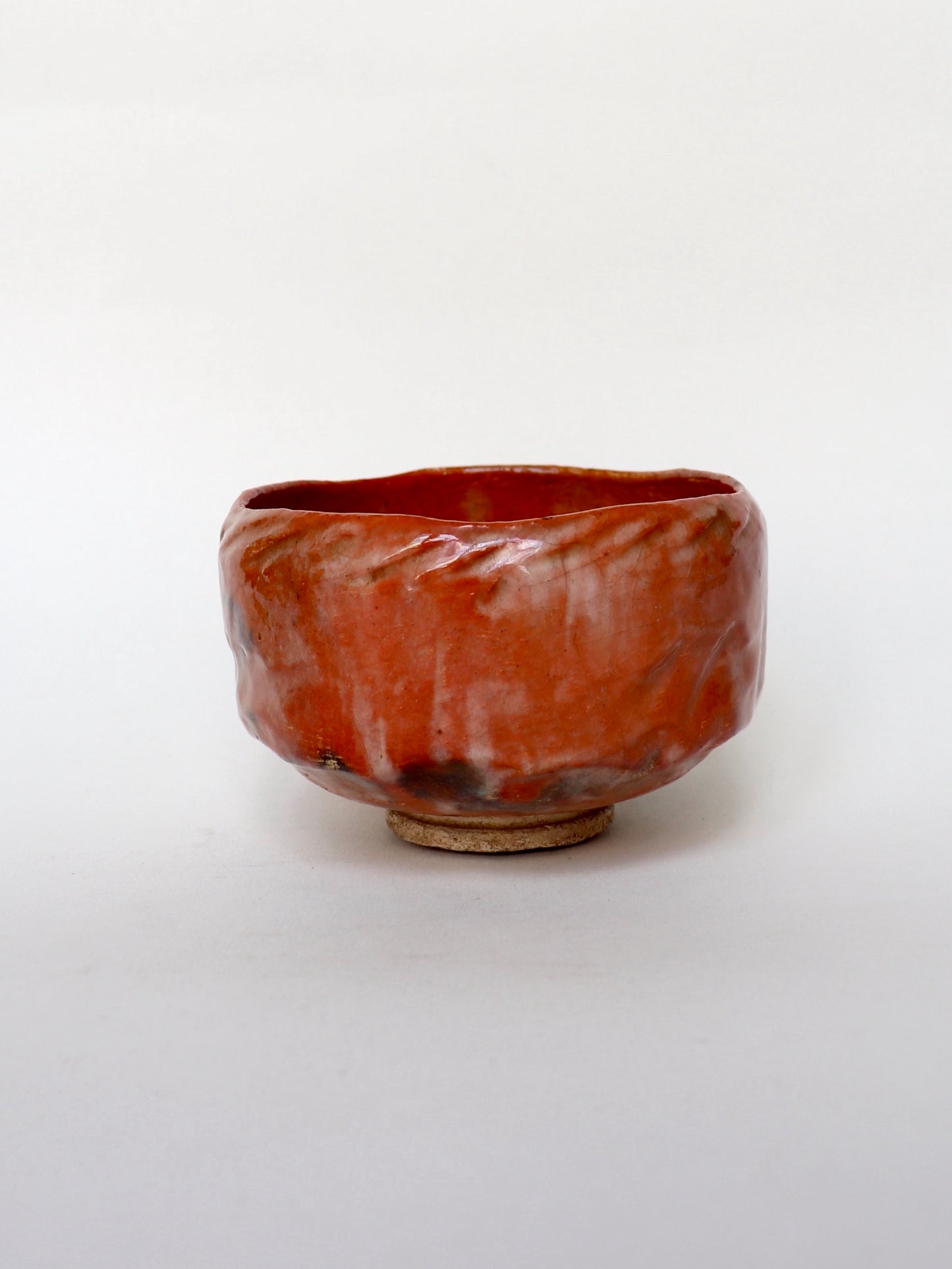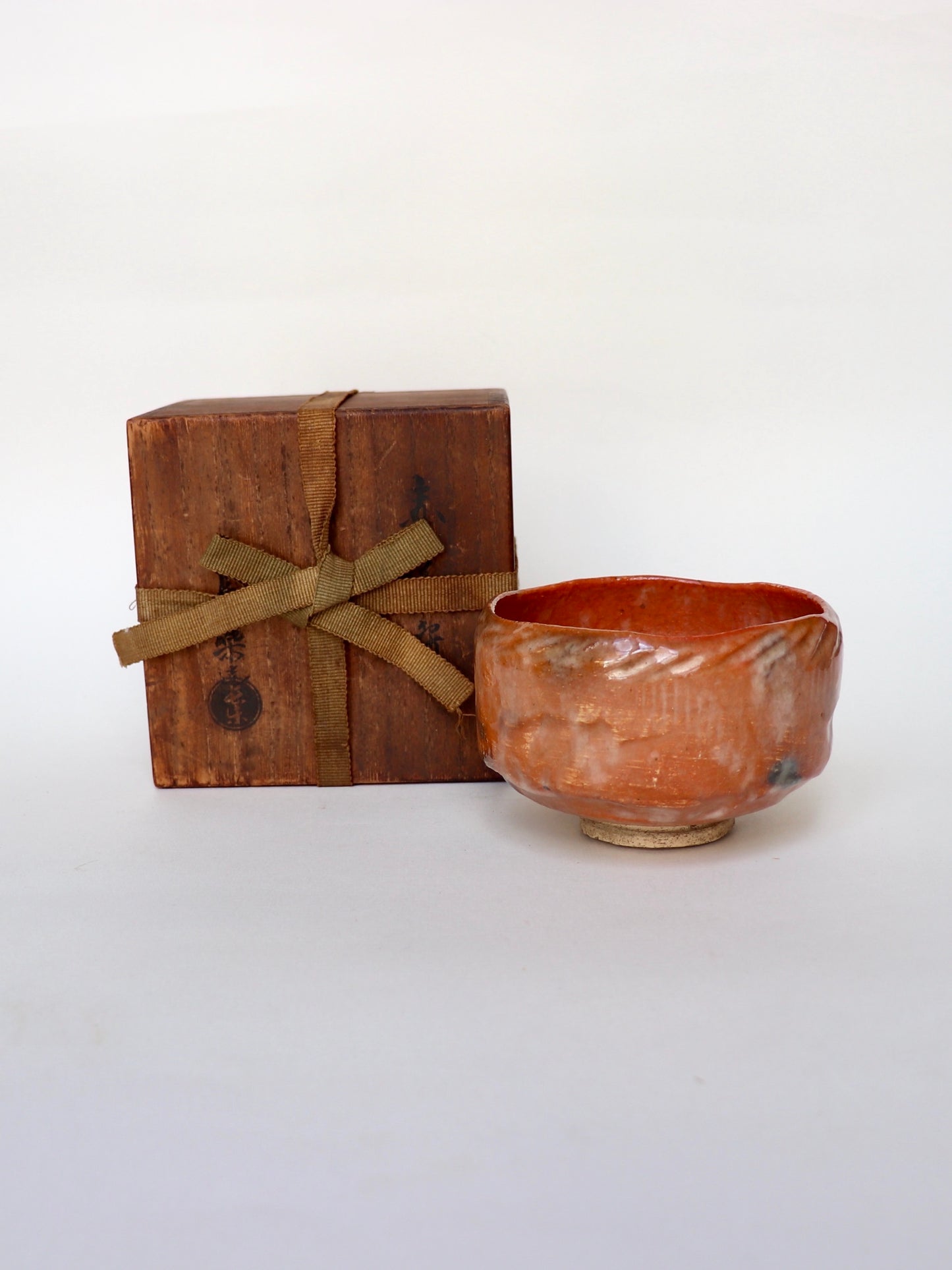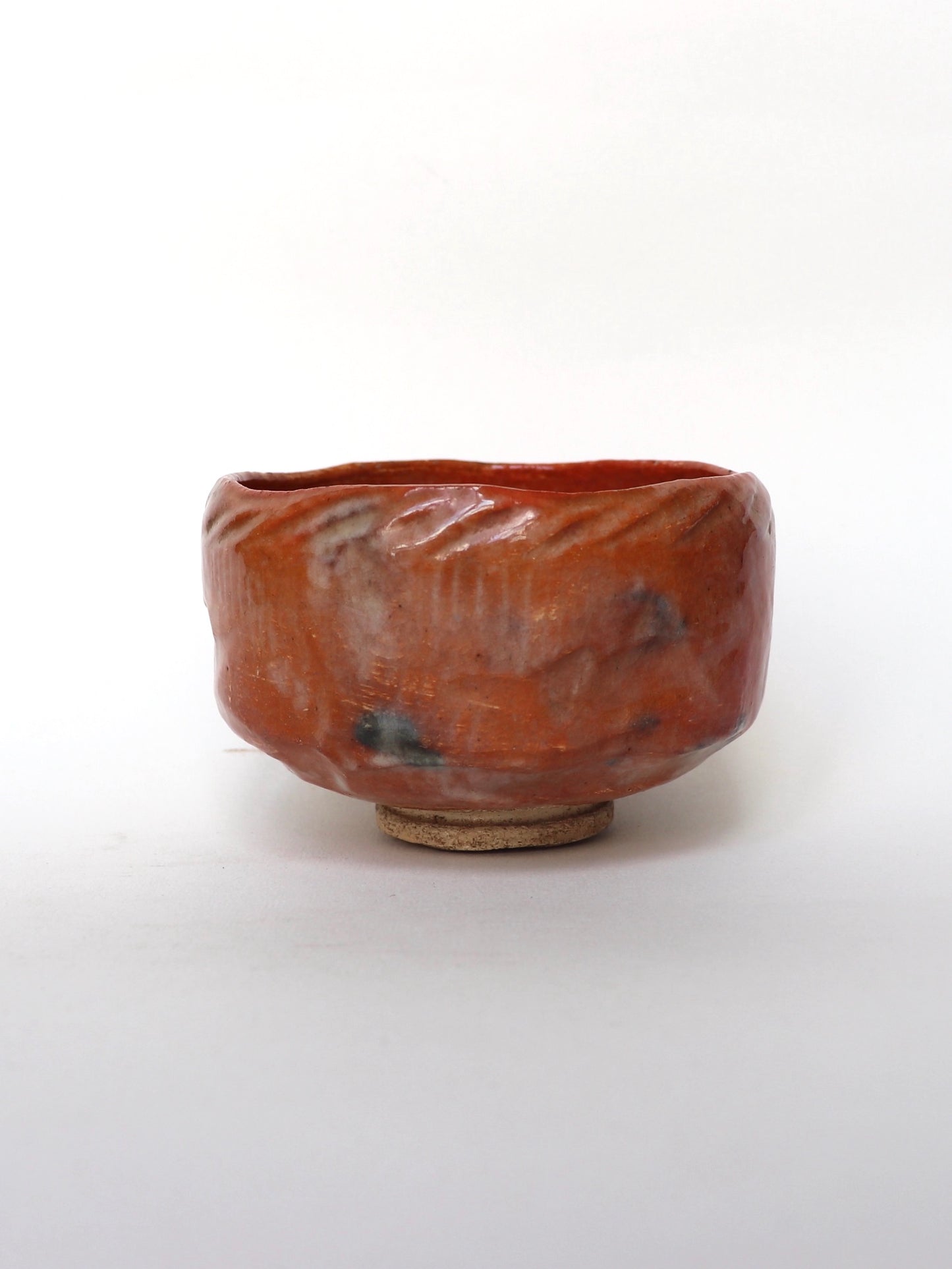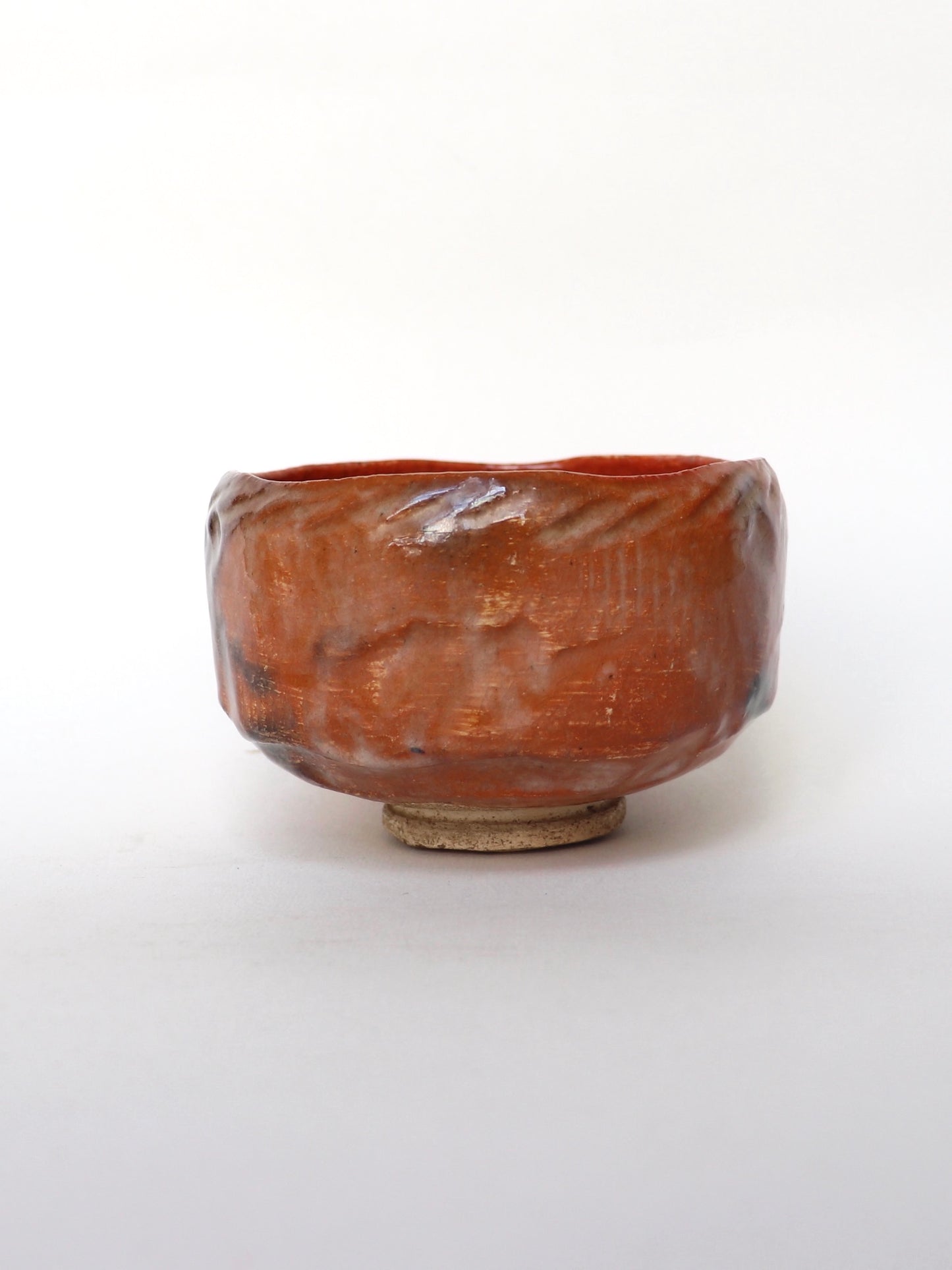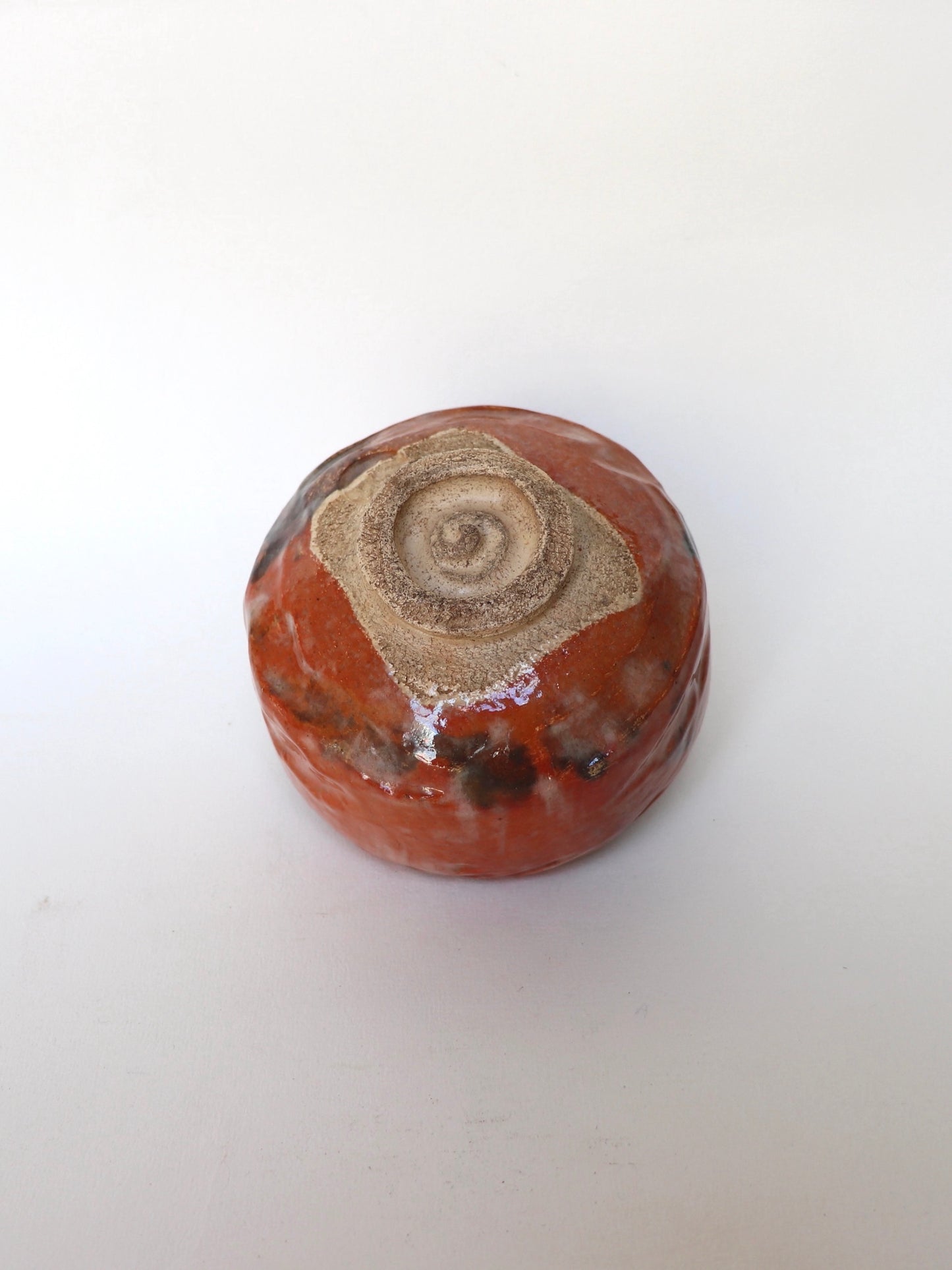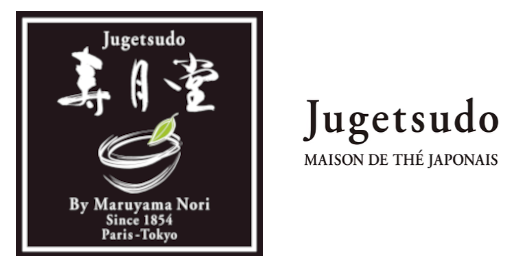Jugetsudo
Bol à matcha / Akachawan Choraku Shodai
Bol à matcha / Akachawan Choraku Shodai
Impossible de charger la disponibilité du service de retrait
Attention, cet article est une pièce unique.
Bol à matcha — Raku-yaki
Ogawa Chōraku I (1874–1939) — Four Chōraku, Kyoto
Ce bol à matcha provient du four Chōraku, fondé à Kyoto en 1906 par Ogawa Chōraku I, figure majeure de la céramique Raku du XXe siècle. Né en 1874 sous le nom d’Ogawa Daijirō, fils du céramiste Ogawa Sammahōgen Masayuki, il entra en apprentissage auprès du 11ᵉ Raku Keinyū en 1886, avant d’obtenir son indépendance en 1904 sur la recommandation du 12ᵉ Raku Kichizaemon (Kōnyū). Deux ans plus tard, il reçut du maître zen Takeda Mokurai le nom de Chōraku, et du 13ᵉ grand maître de l’école Urasenke, Ennōsai, le nom de pavillon Chōyūken. Il fonda alors le four Chōraku près du sanctuaire Wakamiya Hachiman à Gojōzaka, quartier historique de la céramique de Kyoto.
Le Raku-yaki, ou céramique Raku, est né il y a plus de 400 ans sous l’impulsion de Sen no Rikyū, père du thé japonais. Façonné à la main sans tour (tezukune) et sculpté au couteau de fer (hera kezuri), le bol Raku se distingue par sa forme organique et sa texture tendre, obtenue par une cuisson à basse température suivie d’un refroidissement rapide (hikidashi). Chaque pièce est unique, imprégnée du geste du potier et de la philosophie du wabi-cha — la beauté dans la simplicité et l’instant présent (ichigo ichie).
Le Chōraku-yaki se distingue par sa recherche de pureté dans la forme et la matière. Les terres fines, sélectionnées et vieillies pendant des décennies, révèlent au feu des nuances allant du rouge profond de la terre oxydée au noir dense des pierres de la rivière Kamo. Le rouge (aka-Raku) symbolise la vitalité de la terre, tandis que le noir (kuro-Raku) évoque la force silencieuse de la pierre et du feu.
Installé ensuite à Okazaki, Ogawa Chōraku I poursuivit son œuvre avec une approche novatrice, tout en préservant les enseignements de ses maîtres. Ses bols, d’une simplicité apparente, révèlent un équilibre subtil entre puissance et douceur, entre intention et spontanéité — une esthétique propre à la lignée Chōraku, transmise jusqu’à aujourd’hui.
Matcha Bowl — Raku Ware
Ogawa Chōraku I (1874–1939) — Chōraku Kiln, Kyoto
This matcha bowl was created at the Chōraku Kiln, founded in Kyoto in 1906 by Ogawa Chōraku I, a pivotal figure in the modern history of Raku ware. Born Ogawa Daijirō in 1874, the second son of potter Ogawa Masayuki, he apprenticed under the 11th Raku Keinyū and, with the encouragement of the 12th Raku Kichizaemon (Kōnyū), established his own kiln in 1904. Two years later, he received the artist’s name Chōraku from Zen master Takeda Mokurai and the pavilion name Chōyūken from the 13th Urasenke Grand Master, Ennōsai. He opened his kiln near Wakamiya Hachiman Shrine in Gojōzaka, the historic center of Kyoto ceramics.
Raku ware, born over 400 years ago under the aesthetic philosophy of Sen no Rikyū, is a uniquely Japanese form of pottery made without a potter’s wheel, using the hand-molding (tezukune) and carving (hera kezuri) techniques. Fired at low temperature and rapidly cooled, each piece is one-of-a-kind, embodying the spirit of wabi-cha — the tea aesthetic that celebrates imperfection, simplicity, and the fleeting moment (ichigo ichie).
Chōraku Raku is characterized by its refined balance of clay and fire. The carefully aged clay produces natural tones ranging from deep red — the color of oxidized earth — to rich black, derived from Kamo River stones ground into pigment. The red (aka-Raku) expresses warmth and life; the black (kuro-Raku) reflects stillness and introspection.
After relocating his kiln to Okazaki, Ogawa Chōraku I continued to innovate while honoring his lineage. His bowls, marked by serene asymmetry and tactile softness, embody the quiet strength and poetic restraint that define the Chōraku family’s enduring contribution to the art of Raku.
Share
